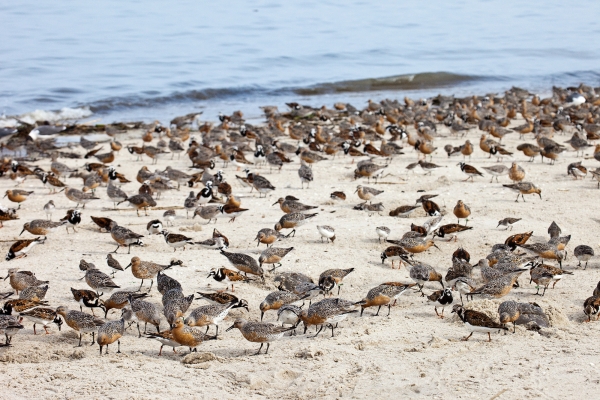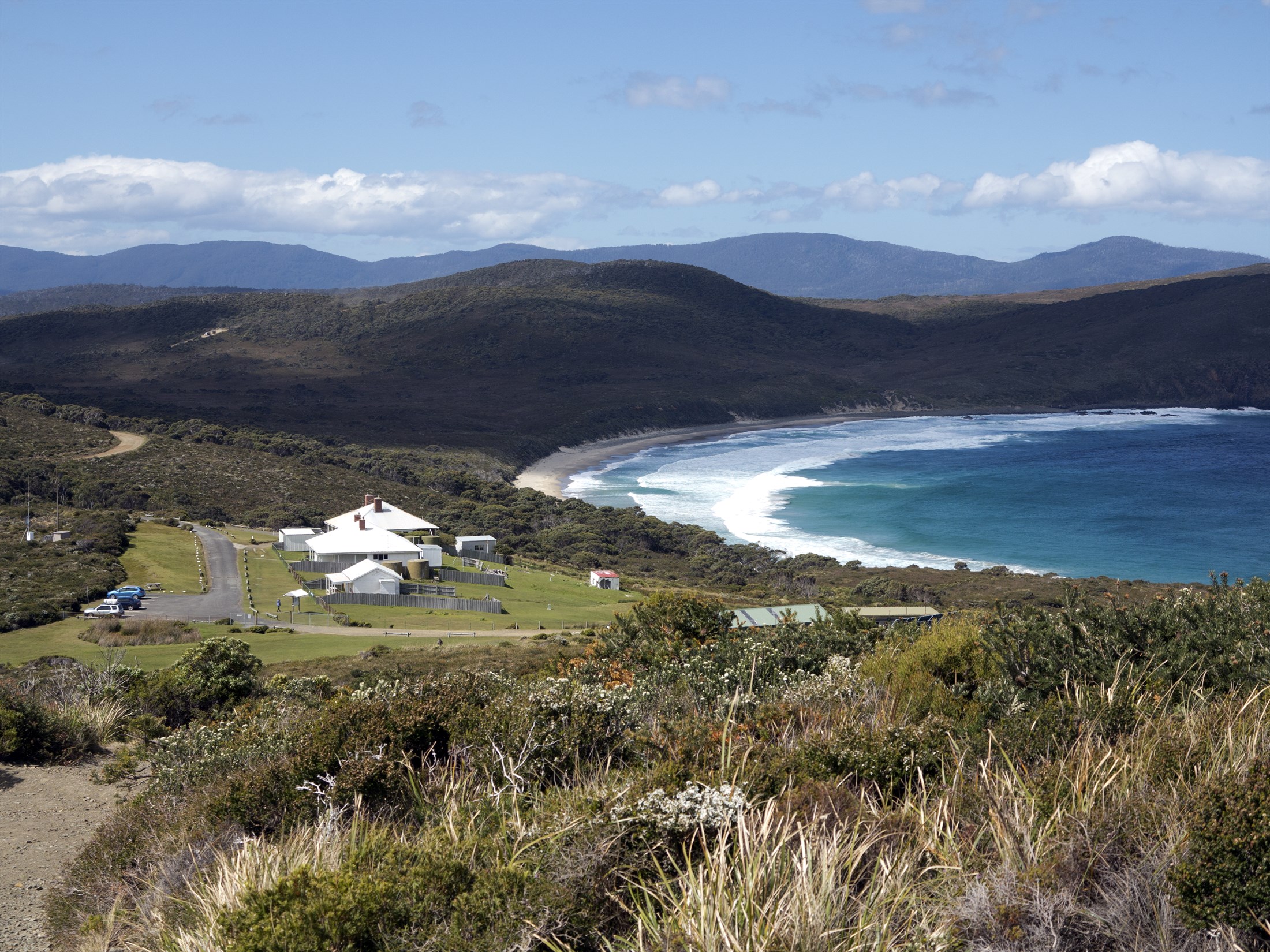

“The Tasmanian Wilderness World Heritage Area protects one of the last true wilderness regions on Earth and encompasses a greater range of natural and cultural values than any other region on Earth”. (www.parks.tas.gov.au)
Tasmania’s 19 national parks, 5 of which are incorporated into the Wilderness WHA, encompass a diversity of unspoiled habitats and ecosystems offering refuge to unique, and often ancient, plants and animals found nowhere else on Earth.
The Tasmanian Reserve Estate includes 135,100 hectares in Marine Protected Areas, Macquarie Island MPA being 81,946 hectares. There are a further 48,500 hectares of marine and estuarine environments under reserve. While 7.9% of Tasmania’s State coastal waters is reserved, only 4.2% is in no-take areas with the majority of this concentrated around subantarctic Macquarie Island. Only 1.1% of Tasmania’s immediate coastal waters are fully protected in ‘no-take areas’. (www.parks.tas.gov.au)
The main government body responsible for the management of these protected areas is the Parks and Wildlife Service [PWS] within the Department of Primary Industries, Parks, Water and Environment. As a government body, the Parks and Wildlife Service is still responsible to the policies of the government of the time.
Conflict over management of these areas arises around the familiar opposing needs of resource collection [forestry, mining, fishing] and preservation of biodiversity and heritage.
Linking Tourism and Conservation (LT&C) is important to Tasmania, as over recent decades tourism has become a significant form of revenue for the State’s economy. A major focal point for the Tasmanian tourist industry is the presence of substantial areas of Wilderness and Natural reserve – both marine and terrestrial – along with the image of being ‘clean and green’. It is therefore vital to the growth of this industry and its contribution the State’s economy that tourism is linked to the source of interest and contributes to the preservation of its base. The present State Government of Tasmania has asked for expressions of interest from the tourist industry for possible developments within the World Heritage Area and other National Parks. It can only be of benefit that membership of an international organization such as LT&C gives positive examples of tourism and conservation which can stand as guidelines when such action is contemplated.
Tasmania is a large island State off the south coast of mainland Australia. It is one of 6 states and 2 territories that make up the Commonwealth of Australia and is responsible for the governance of a number of smaller islands around its coastline including the Bass Strait islands of King, Cape Barren and Flinders and the southern ocean island of Macquarie. Mainland Tasmania is approximately 92610 sq kilometres, approximately 5400 kilometres of coastline, with a population of 514,684 (ABS March 2014). Tasmania has had a history of valuing conservation and protection of natural heritage – the Scenery Preservation Board (1915) had set aside much of Tasmania’s environment for future generations, including Mount Field and Freycinet Peninsula National Parks (1916), Port Arthur Historic Site (1916) and Cradle Mountain-Lake St Clair National Park (1922).
Since the 1970s conservation and protection of natural heritage has increased. Of the 92610 sq kilometres around 41,674.5 sq km (45%) are under some form of conservation and/or protected status. Of the 5400 kilometres of coastline 48500 hectares (not including the Marine Protected Area of Macquarie Island) is classified as Marine Protected Areas – this does not mean they are exclusive ‘No Take Zones’ but have recognised status as containing important and unique biodiversity.Protected Areas: The protected areas of Tasmania consist of South West World Heritage Wilderness Area (15840 sq km, WH listing in 1982), Macquarie Island World Heritage Area, 19 National Parks, 420 Reserves, some Crown land and Marine Protected areas.
Tasmania as a State of Australia is a good example of linking tourism and conservation in several ways:- It has a history of significant, well-managed protected areas. raising the profile of the island and the benefits of nature-based tourism.There are a number of positive examples of tour operators supporting protected areas both financially and through their educational activities working alongside the relevant government agencies in this regard.
– Tasmania is also a very good example of tourism supporting the management of protected areas through the collection and use of park entrance fees. The PWS collects these fees, as a percentage of their revenue, in a technically efficient manner and is transparent, through its website, in the direct use of such revenues for the ongoing management and conservation of protected areas.
“Tasmania aims to reach CBD target 11 before 2020 as leading example in the world”
A proposal for an LT&C project, which demonstrates that tourism and conservation in Tasmania are able to join forces. This would require the support and recognition of the three areas involved, government agencies, conservation NGOs and, in particular, tour operators and the tourism industry at large.
Rationale: With more than 7% of its marine area protected Tasmania is close to the global target of 10%. As a State with a high marine profile and already having good examples of properly managed Marine Protected Areas closing this small gap and reaching the global target could be achievable. Thereby the project is for Tasmania to focus on the coasts of its mainland and increase marine protected areas as no-fishing zones with the understanding and appreciation of the benefits such zones mean for the surrounding fishing areas.
A) In regard to tourism supporting the management of protected areas through the collection and use of park entrance fees: the method of collection, including the recent extension to internet-based access, and the transparency of use to support the ongoing management and conservation of the protected areas are concrete examples for other areas to replicate.
B) “Tasmania aims to reach CBD target 11 before 2020 as leading example in the world”: This could encourage other countries to emulate Tasmania to reach the same goal earlier.
© Linking Tourism & Conservation (LT&C) 2019
We are grateful that you support the work and mission of LT&C! We accept donations through Credit Card, PayPal or international bank transfer:

Donate through Credit Card
Please click the Donate button and then choose your PayPal account
Bank details:
Cultura Sparebank
Pb. 6800, St. Olavs plass
N-0130 Oslo
Name: Linking Tourism & Conservation,
Account no.: 1254 05 95168
IBAN: NO8712540595168
BIC/SWIFT: CULTNOK1
Routing BIC: DNBANOKK
Please mark payments with your name and/or email address
Sign up for an LT&C membership by filling in the details below.
Would you like your LT&C-Example/Initiative to be listed on our website? Please fill in the form below.